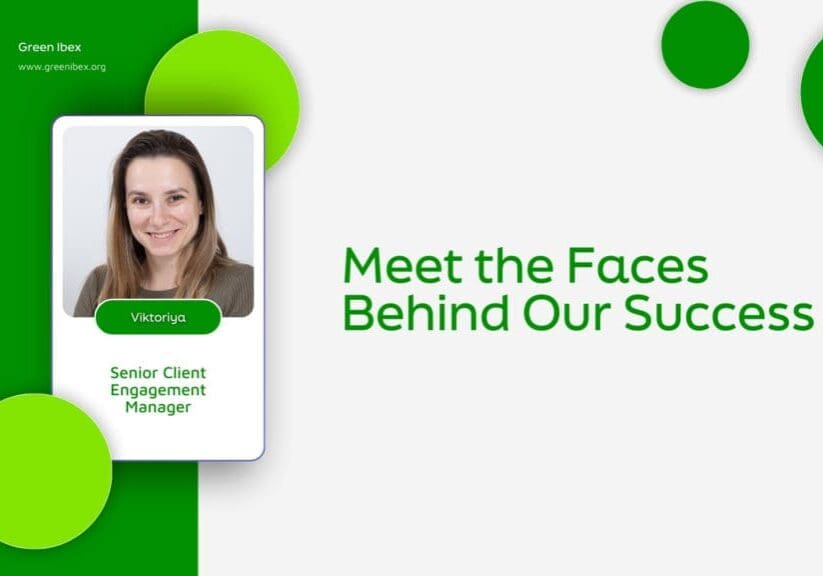Green Ibex
Knowledge Hub
4 Steps to Starting Your Journey to Net Zero: A Business Leader’s Roadmap
How to project-manage sustainability efforts
Sustainability. Net zero. Are they just trendy buzzwords, or the future of business? For busy business leaders, these terms can feel as clear as a cloudy day—futuristic, a bit overwhelming, and full of questions. But dig a little deeper, and you’ll find they’re more than just good intentions. They’re a chance to stand out, prepare your business for what’s ahead, and create something that lasts well beyond the next quarter.
Naturally, questions arise: Should you tackle net-zero project management on your own or bring in expert support? What do you prioritise? Should you dive straight into the grunt work of carbon footprint assessment, or declare your commitment publicly first?
Which of these you do first isn’t as important as knowing what you want to achieve and having a realistic timeframe and the right team to deliver it. The key is to commit in practice, not just in theory. Approach net-zero project management just like any other project: have a vision, a plan, and a healthy dose of persistence.
Here’s how you can manage your net zero projects and deliver the same results as your most successful ones. Spoiler alert: this isn’t about doing everything all at once. It’s about doing the right things at the right time, and doing them well.
Step 1: Start with the goal in mind – vision
As business founders, we don’t do things by accident – there’s a rationale behind most actions. Your net zero transformation should be no different, so make sure you know your “why”, even if it feels more reactive at the start.
Are you aiming to secure a contract that has ESG requirements? Cut costs? Or take proactive steps to differentiate from competitors? Perhaps you need to improve operational efficiency and are looking for quick wins? Understanding your why is the key to a positive outcome.
Once you have the vision, make it known—loud and clear. Talk to stakeholders, employees, and anyone who has skin in the game. Through collaboration and conversation, you will shape a vision that’s realistic, inspiring, and tailored to your business needs.
Pro Tip: A vision that isn’t understood will quickly be dismissed. This is why it is important to spend time crafting messaging that resonates. Be clear about your desired outcomes, and be consistent in how you communicate them. If your team doesn’t know the “why,” your transformation risks losing momentum before it even begins.
Step 2: Failing to plan is planning to fail
Here’s where the rubber meets the road—or better yet, where ambitious ideas take shape as actionable steps.
The first rule of thumb: don’t try to eat the elephant all at once. Break up your initiative into manageable phases. Start with quick wins to build momentum and confidence. For example:
- Maximise what’s within your direct control and influence. If you rent office space, focus on simple and immediate changes like turning off electronics when not in use, or minimising energy waste. Ask your landlord about their sustainability credentials.
- Encourage eco-conscious behaviour. Engage employees through recycling programs, volunteer days, and using digital collaboration tools.
- Conduct a review of your business processes. Can you reduce business travel, encourage greener commuting (through cycle-to-work or an EV salary sacrifice), or use smart energy monitoring devices to better understand your energy use?
- Close the loop on materials. If you’re in manufacturing, look at ways to reclaim or reuse materials. For example, if you design consumer goods, could you take back used products from customers at the end of life or repurpose waste? It’s a win-win: you’ll cut costs and use expensive raw materials less.
- Collaborate with your suppliers to bring down emissions – launch knowledge transfer programs, be clear about the data you need, and share resources.
Think of your plan as a relay race, where each phase builds on the one before. Begin by auditing emissions to identify quick wins and major sources of carbon impact. If you’re not sure where to go to get the data, don’t worry—we’ve got you covered. Get our DIY carbon assessment guide by filling out the form below:
Next, assess whether your goals can be achieved with current resources and training. If gaps exist, adjust your plans to fit your budget and team capacity, upskill staff where feasible, or bring in outside expertise to accelerate progress.
If training is part of your desired solution, we’re here to help. Whether it’s a foundation course in sustainability or tailored role-specific workshops—like supplier selection for procurement teams—send us an email and ask to see our training library.
Pro Tip: Having a vision is great – but make sure it is grounded in the realities of your budget and resource capacity. If undertaking a bigger change, do it in phases to reduce change fatigue. Set clear OKRs for your teams and provide training and support.
And if you’re new to the sustainability support market and not sure what budget to ring-fence, drop us a note for a no-obligation call. We can help with change management, employee training, and carbon reduction targets.
Step 3: Management of net-zero projects: Keep the wheels turning
Planning gives you a sense of achievement. It’s the first big, actionable step you are taking. But execution is where the magic happens. Or the chaos, if you’re not careful. That’s why you need a solid project management framework.
Take it from someone with 25+ years of project delivery experience: You need a project sponsor. Internal champions are critical for project success.
This is the person, preferably a senior leader in the business, leading meetings and ensuring the net-zero transformation remains top of mind. They set the frequency and agenda of check-ins, work directly with the project manager, and make sure everyone is rowing in the same direction.
The second essential person you need is a project manager. They help define and deliver the work streams, manage costs and benefits, and track progress. They’re the ones to go to for real-time updates of what’s working, what’s lagging, and if you need to course correct. They have visibility of resources, output, and utilisation rates.
Pro Tip: Celebrate individual and team achievements to keep morale high. It’s not just about reaching the finish line—it’s about enjoying the journey and recognising progress. If your employees are included, supported and celebrated, they will feel the change and will want to push forward together.
Step 4: Share the vision, the wins and the challenging times
Change, even if positive, can make people anxious. That’s why regular communication with your stakeholders is non-negotiable. Transparency is your best friend here. People need to know what’s happening, why it matters, and how it will affect them– from your customers, to investors, to the general public.
Reinforce the purpose behind these changes, like a catchy chorus in your favourite song. Repetition ensures the message sticks. And when milestones are hit, shout it from the rooftops (ideally solar-panelled ones).
Pro Tip: Sharing doesn’t stop internally. Publicising your achievements—like hitting a major carbon reduction milestone—can enhance your reputation, attract like-minded partners, and even open up new business opportunities.
Lots of companies are doing well but shy away from telling the world about it. Afraid of greenwashing or being held to impossible standards, they don’t realise the amount of new business or market share they’re losing out on by not sharing this publicly.
Achieving net zero isn’t just one project—it’s a combination of concentrated efforts across functions.
If you need help building a structure around what you’re already doing, or planning your first sustainability project, why not call in some expert help? We’ll help you spot gaps, understand stakeholders, and plan your moves with precision and care.
It can provide a much needed confidence boost at the most critical time – the start of your journey. You’ll save time, money, and understand what resources you need to take on larger projects.
Sustainability can be a bumpy road, but you don’t have to go it alone.
Share this article
Whitepaper & Guide library
Don't let confusion where to start or lack of internal knowledge stop you. Your Scope 1 and 2 emissions are your customer's Scope 3 emissions – those are the ones they need to report on and will likely request. Check out our guides on getting started with your initial assessment – and give us a shout if you get stuck.





Download the latest Whitepapers and Guides from Normative & Green Ibex
To request a download, please get in touch.
Get in touch
Let’s prepare for the future together
We can tailor services to meet your particular needs. Complete the form or email us and and we can discuss your specific requirements.
Registered Address
71-75 Shelton Street,
London,
WC2H 9JQ,
United Kingdom





